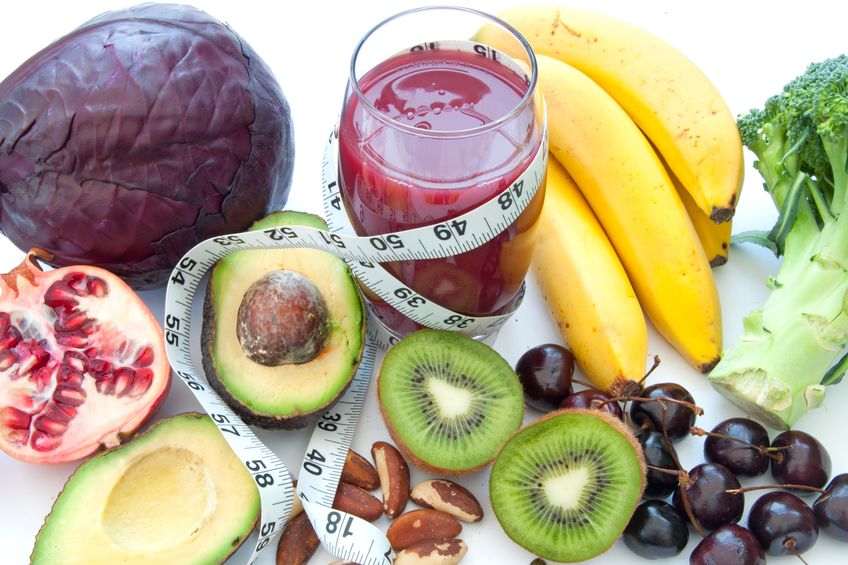If you want to lose fat and stay lean and healthy, most mainstream “diet gurus” would have you…
- drastically reduce your carbohydrate intake, and
- eliminate “bad” carbohydrates from your diet.
Follow their advice and the misery will begin.
As whole-body glycogen levels decline, your workouts will get harder and harder.
The more you try to forsake the carbohydrate-rich foods you love, the more you’ll crave them.
You’ll likely struggle with low energy levels throughout the day and will find it tough to focus on work and other mental tasks as well.
And the kicker?
You won’t lose fat any faster than you would a “carb-friendly” diet and probably won’t change anything healthwise either.
That’s right–cutting carbs isn’t a recipe for easy and automatic weight loss nor is swapping “bad,” high-glycemic foods for low-glycemic alternatives.
As you’ll soon see, where foods fall on the glycemic index has some relevance to overall health but little-to-no effect on fat loss and body composition.
The reality is you can lose fat and stay lean and healthy eating plenty of carbs every day, including “bad” high-glycemic ones.
Table of Contents
+
What is the Glycemic Index?

The glycemic index (GI) is a numeric system that ranks how quickly the body converts carbohydrates into glucose.
Carbs are ranked on a scale of 0 to 100 depending on how they affect blood sugar levels once eaten.
A GI rating of 55 and under is considered low on the index, while a rating of 56 to 69 is medium, and a rating of 70 or above is high.
Simple carbohydrates are converted into glucose quickly and thus have high GI ratings. Examples of simple carbohydrates and their corresponding GI ratings are sucrose (65), white bread (71), white rice (89), and white potato (82).
Complex carbohydrates are converted into glucose more slowly and thus have lower GI ratings. Examples of complex carbohydrates and their corresponding GI ratings are apples (39), black beans (30), peanuts (7), and whole-grain pasta (42).
Are Low-Glycemic Foods Better For You?

The idea that some carbohydrates are “better” than others is the foundation of many popular diets.
High-glycemic foods like white rice and potato spike insulin and blood sugar levels, and this supposedly impairs weight loss or even causes weight gain.
Low-glycemic foods like vegetables and whole grains, however, have less of an impact on insulin and blood sugar levels, and are claimed to be more healthful and conducive to weight loss and maintenance.
This makes for a simple dietary model, which makes for good marketing.
“Get the body you really want without having to fuss with calorie or macronutrient counting or planning…by just avoiding ‘bad’ foods and eating ‘good’ ones instead!”
It sounds pretty good, right?
Unfortunately, it guarantees nothing in the way of results.
If “cleaning up” your diet causes you to replace quite a few high-calorie foods with lower-calorie alternatives, you may lose weight…for a little while at least.
This is a function of energy balance, though, not hormone optimization or metabolic advantage or any other type of dietary sorcery or voodoo. Eat less energy (calories) than you burn and your weight will go down, regardless of the foods eaten.
If doing it causes you to increase your intake of nutrient-dense foods, you may improve your overall health…but only if your diet is woefully low in micronutrients.
Considering the availability and affordability of high-quality nutritious foods, there’s just no good excuse for having a micronutrient-deficient diet.
For example, here’s a simple list of nutrient-dense foods to choose from:
- Avocados
- Greens (chard, collard greens, kale, mustard greens, spinach)
- Bell peppers
- Brussels sprouts
- Mushrooms
- Baked potatoes
- Sweet potatoes
- Berries
- Whole wheat
- Cheese and yogurt
- Eggs
- Seeds (flax, quinoa, pumpkin, sesame, and sunflower)
- Beans (garbanzo, kidney, navy, pinto)
- Lentils, peas
- Almonds, cashews, peanuts
- Barley, oats, rice (white and brown)
- Salmon, halibut, cod, scallops, shrimp, tuna
- Lean beef, lamb, venison
- Chicken, turkey
As you can see, you have a lot of options, and turning them into a workable meal plan is simple:
Determine how many calories you should be eating every day and how they should break down into macronutrients, start with high-quality protein, then add a few servings of fruits and vegetables, work in some whole grains, and maybe some eggs, legumes, and nuts, and voila…you have fully optimized your diet for health, performance, and longevity.
Now, if you look back over that list, you may notice that there are more low-glycemic foods than high ones.
Sure, white potato, white rice, oats, and some fruits are mid-to-high on the index, but most of those foods on the list are no higher than 70 on the index and most are quite lower.
The reason for this is the majority of (relatively) unprocessed foods–the ones you prepare yourself–are naturally lower on the GI.
The majority of high-GI foods, on the other hand, are highly processed “junk” foods, like chips, pretzels, soda, popcorn, store-bought baked goods, cereal, foods with large amounts of added sugar, and so forth.
When someone’s diet is comprised of a lot of high-GI foods, what we’re usually looking at is someone that just eats a lot of crap.
And I don’t think I have to sell you on the disadvantages of eating like that. If General Mills products account for the majority of your daily calories, it will catch up with you eventually.
On the other hand…
Get the majority of your calories from relatively unprocessed foods, exercise regularly, and you can enjoy your favorite less healthful indulgences.
For example, if 80% of your daily calories come from the high-quality proteins, fruits, veggies, whole grains, and so forth, a couple hundred calories of ice cream or some other form of “empty calories” aren’t going to matter.
Don’t take it just from me, though.
Here’s how Dr. Frank M. Sacks, a professor at Harvard Medical School and Brigham and Women’s Hospital, puts it:
“The takeaway is a good message for people. They can pick foods that are part of a healthy dietary pattern without wondering if they’re high or low glycemic. They don’t have to learn that system.”
This is just common sense, really, and there’s good research to back it up, but as the old saying goes…common sense isn’t common practice.
Now, that’s the health side of things. What about body composition? And fat loss in particular?
Will a Low-Glycemic Diet Help You Lose Fat?

Earlier I mentioned that you could lose weight eating any types of foods and I meant it.
Case in point:
Professor Mark Haub lost 27 pounds on a diet of protein shakes, Twinkies, Doritos, Oreos, and Little Debbie snacks.
This “shocking” experiment worked because it was based on the scientific principles of energy balance, which underlie and dictate weight gain and loss.
In case you’re not familiar with energy balance, think of it like your metabolism’s checking account.
A negative balance is a situation where your body is burning more energy than you’re feeding it (it’s in the red as far as energy goes). A positive balance, on the other hand, is a situation where your body is burning less energy than you’re feeding it (it’s in the black).
A negative energy balance results in a reduction of total fat mass because your body has to get the additional energy it needs from somewhere, and body fat is one of the primary sources of this energy.
A positive energy balance results in an increase in total fat mass as your body is programmed to store a portion of the excess energy you feed it as body fat.
Talk of calories and energy balance is unpopular these days as people don’t want to bother with counting calories to lose weight, but a century of metabolic research shows us that these are the facts, whether we like them or not.
If you consistently feed your body less energy than it burns, you’ll lose weight. If you consistently feed it more, you’ll gain weight.
Weight loss does NOT require you to only eat certain types of food, avoid other types, combine types in various ways, or any other quackery.
High-glycemic foods…low-glycemic foods…high insulin levels…low insulin levels…it doesn’t matter.
Feed your body less energy than it burns and you will lose weight. End of story.
Now, sticklers will correctly point out that weight loss isn’t the goal–fat loss is. That is, you want to lose fat and not muscle, and when that’s the goal, what you eat matters.
The point here, however, isn’t that the individual foods you eat affect fat and muscle loss, because they don’t. What does matter, however, is the macronutrient breakdown of your diet.
If you want to learn more about optimizing your macronutrient intake for fat loss and muscle preservation, check out this article.
The Bottom Line on the Glycemic Index

Diets that focus exclusively on managing the glycemic index miss the forest for the trees.
Sure, they can encourage you to eat more nutritious foods but let’s face it–the primary reason people start “dieting” is to lose fat and build muscle, and eating “clean” foods have little effect on this. If a dietary method doesn’t take protein intake and energy balance into account, you’re essentially flying blind, hoping for the best.
The key takeaway of this article is this:
Sensible eating involves eating plenty of low-glycemic foods not because of where they fall on the glycemic index but because of their micro- and macronutritional profiles.
What’s your take on the glycemic index? Have anything else to share? Let me know in the comments below!
Scientific References +
- RC, A., & RD, M. (2005). Influence of glycemic index/load on glycemic response, appetite, and food intake in healthy humans. Diabetes Care, 28(9), 2123–2129. https://doi.org/10.2337/DIACARE.28.9.2123
- FM, S., VJ, C., CA, A., ER, M., T, C., J, C., BJ, H., N, L., P, M., J, S., K, W., K, Y., & LJ, A. (2014). Effects of high vs low glycemic index of dietary carbohydrate on cardiovascular disease risk factors and insulin sensitivity: the OmniCarb randomized clinical trial. JAMA, 312(23), 2531–2541. https://doi.org/10.1001/JAMA.2014.16658










